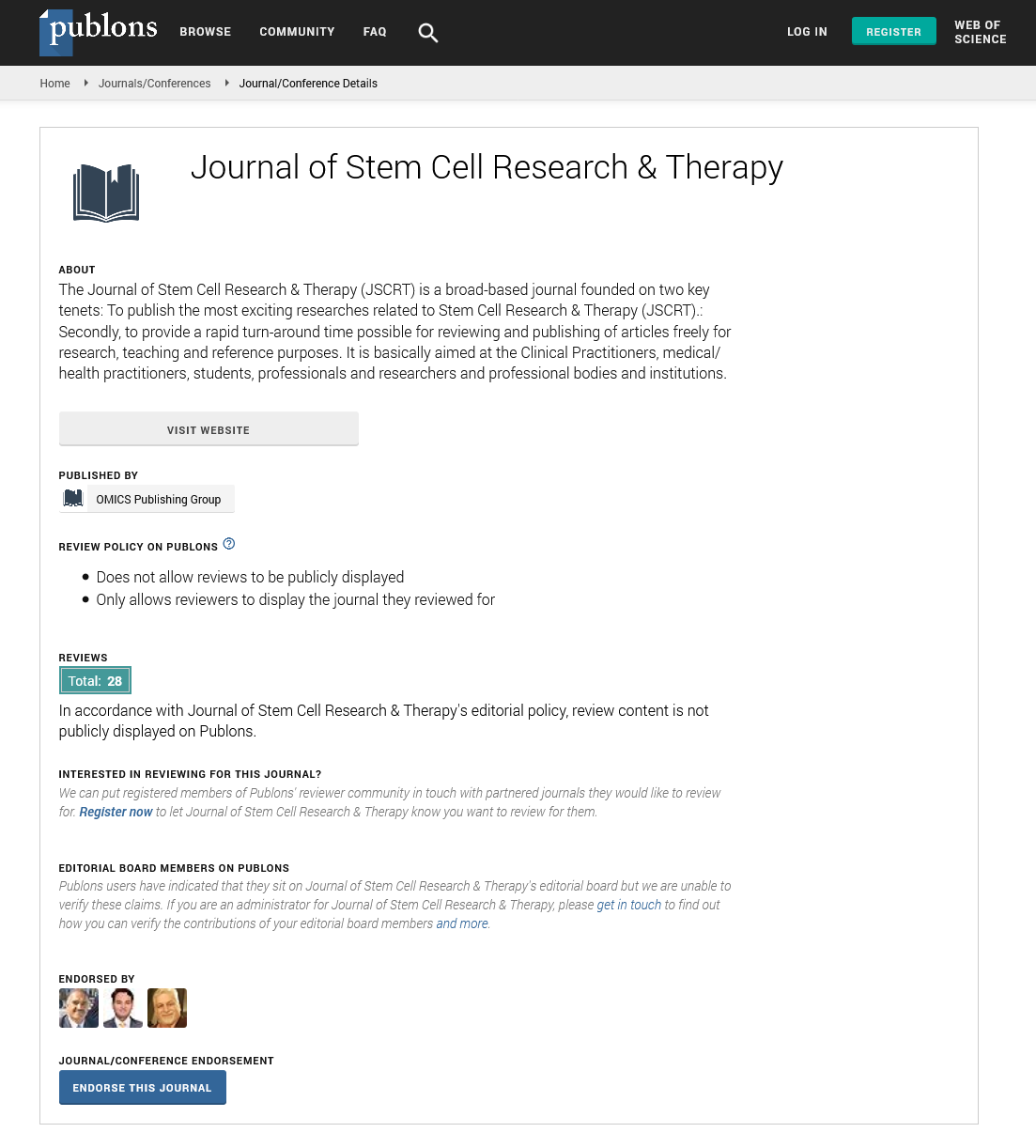Indexed In
- Open J Gate
- Genamics JournalSeek
- Academic Keys
- JournalTOCs
- China National Knowledge Infrastructure (CNKI)
- Ulrich's Periodicals Directory
- RefSeek
- Hamdard University
- EBSCO A-Z
- Directory of Abstract Indexing for Journals
- OCLC- WorldCat
- Publons
- Geneva Foundation for Medical Education and Research
- Euro Pub
- Google Scholar
Useful Links
Share This Page
Journal Flyer

Open Access Journals
- Agri and Aquaculture
- Biochemistry
- Bioinformatics & Systems Biology
- Business & Management
- Chemistry
- Clinical Sciences
- Engineering
- Food & Nutrition
- General Science
- Genetics & Molecular Biology
- Immunology & Microbiology
- Medical Sciences
- Neuroscience & Psychology
- Nursing & Health Care
- Pharmaceutical Sciences
Creating pluripotent stem cells from an adult animal tissue without the use of any retroviruses or nuclear gene manipulation
5th International Conference and Exhibition on Cell and Gene Therapy
May 19-21, 2016 San Antonio, USA
Michael Heggeness
University of Kansas School of Medicine, USA
Scientific Tracks Abstracts: J Stem Cell Res Ther
Abstract:
We describe the discovery of the presence of large density of quiescent pluripotent stem cells within peripheral nerves in adult mice. We have demonstrated that these cells can be induced to proliferate exuberantly by either exposure to the human cytokine BMP2, a commercially vended bone inducing agent (InfuseTM) used for spinal fusion. The BMP2 molecule is an ancient one, and is known to act in dorsal-ventral differentiation in insects.We have also learned that the this cellular proliferation can be induced by physical trauma to the nerve. These cells have now been harvested, by surgical excision of a stimulated nerveand cultured in appropriate restrictive media. The cells have been characterized by our group in and appear to be a new class of truly pluripotent stem cells that fulfill many of the criteria for embryonic stem cells. Immunohistochemical staining experiments have demonstrated that these cells express the four critical genetic markers for embryonic stem cells: Oct4, Sox2, Klf4 and c-Myc. Interestingly, as hoped, the immunohistochemical staining shows that the staining we demonstrate is confined to the cell nucleus. We have also demonstrated the abundant presence of mRNA for these markers by Polymerase Chain Reaction (PCR) techniques. We have successfully induced differentiation of these cells into osteoblasts, endothelial cells, ectoderm and endoderm. We have induced these cells from 3 mammalian species: mouse, rat and human. These cells may represent a very attractive new source of cells for regenerative therapies, as a small biopsy of a non-essential cutaneous nerve could be used to grow and differentiate self-specific therapeutic cells for an individual patient. This would likely remove any risk of immune rejection of cells that are truly ‚??self ‚?Ě. Risks of malignant transformation and teratoma formation would also likely become moot. In general, embryo derived stem cells require special culture techniques, are not motile, and in culture form colonies. While our newly discovered cells do express all of the critical embryonic stem cell markers for mouse and human, they are distinct in that they are motile, adhere to glass or plastic substrate, and are much easier to culture. They do not require ‚??feeder cells‚?Ě. Most remarkably, they can be derived from adult animals and adult humans. We suggest that they be referred to as Nerve Derived Adult Pluripotent Stem cells or NEDAPS cells. We recognize that there have been scandals in the past when similar claims have been made that may have been more wishful thinking that fact. That is not the situation here.
Biography :
Heggeness attended Haverford College in Philadelphia before completing a PhD in membrane biology with Dr SJ Singer at UC San Diego before completing a postdoc with Purnell Chopin at the Rockefeller University. He then obtained an MD and completed a residency in Orthopaedicsurgery . He joined the faculty at the Baylor College of Medicine in 1990.He took the Chair of Orthopaedic Surgery at the University of Kansas-Wichita in 2013, where he continues his research on both clinical topics as well as the basic science of bone, and intraosseous nerves. He has 84 peer reviewed publications.
Email: mheggeness@kumc.edu

